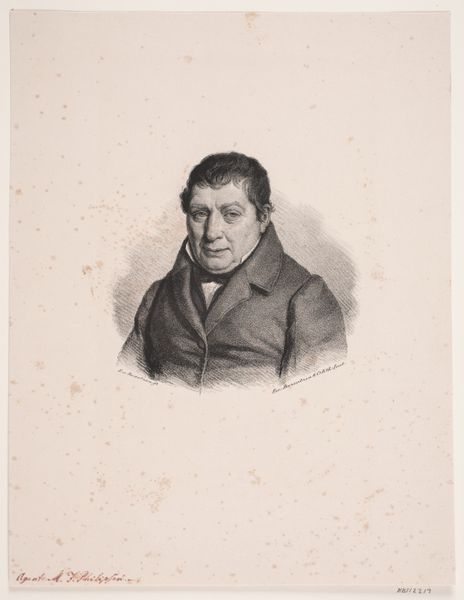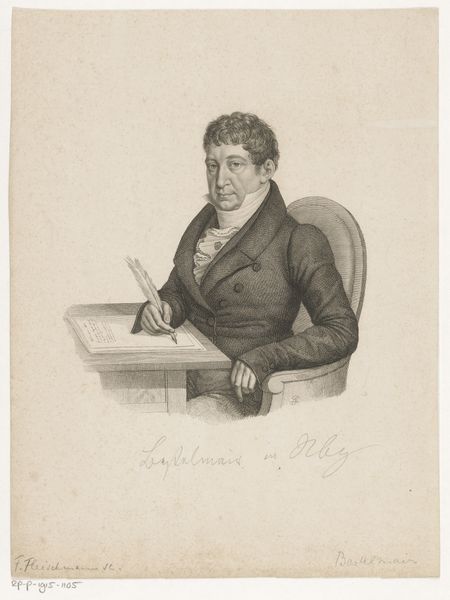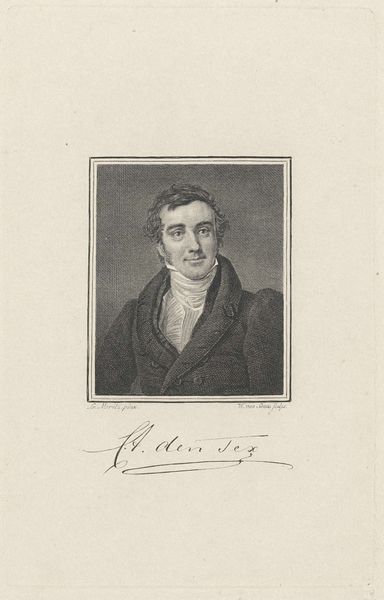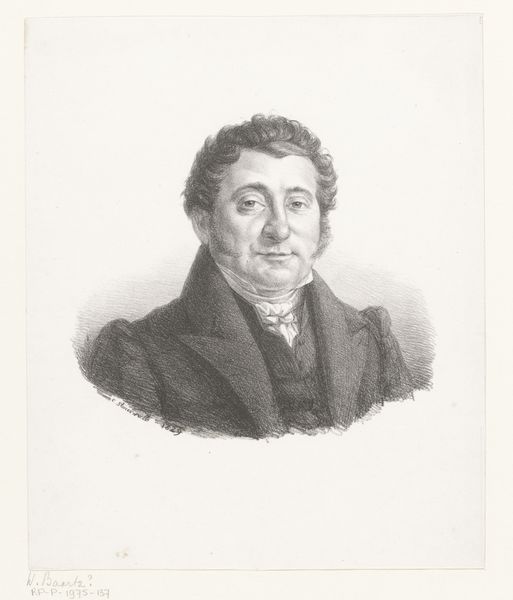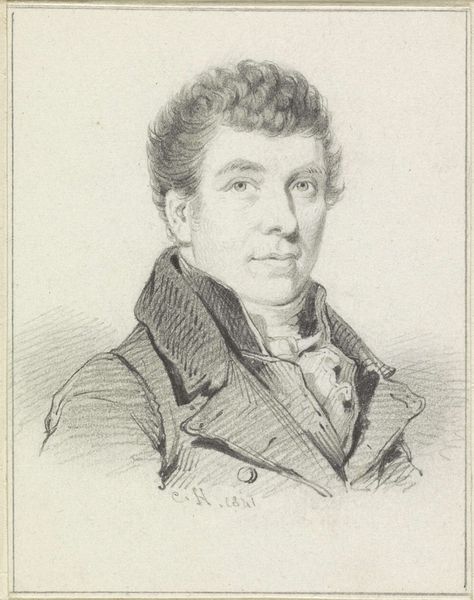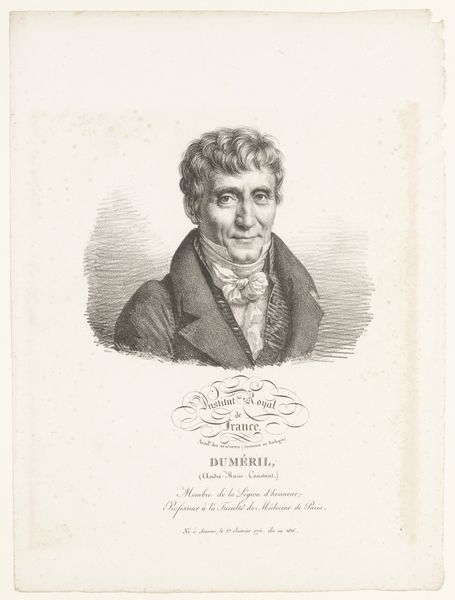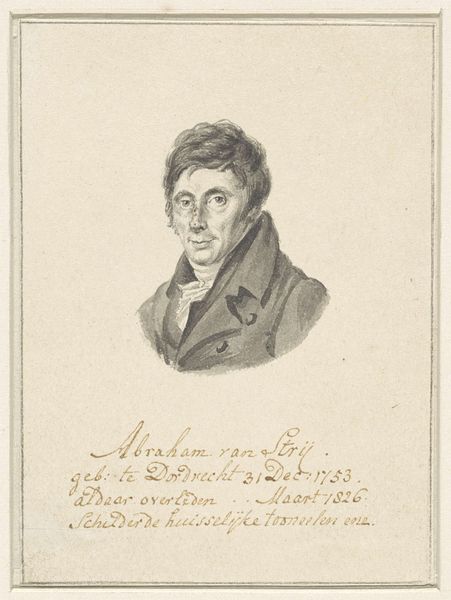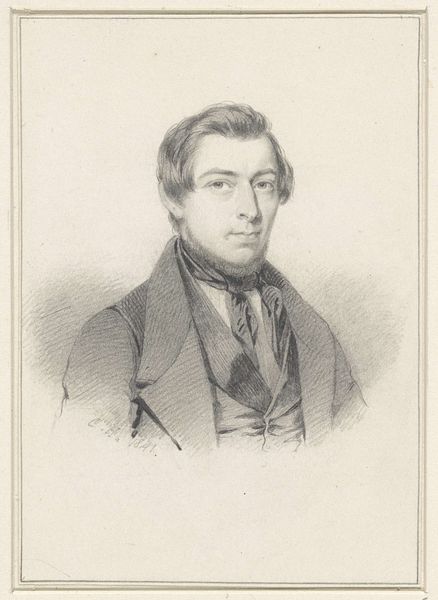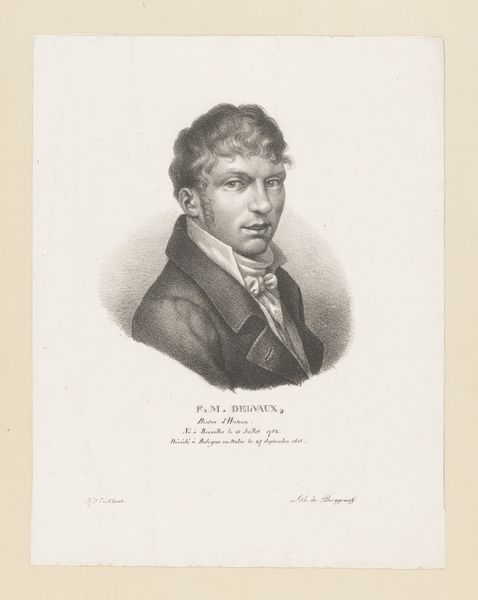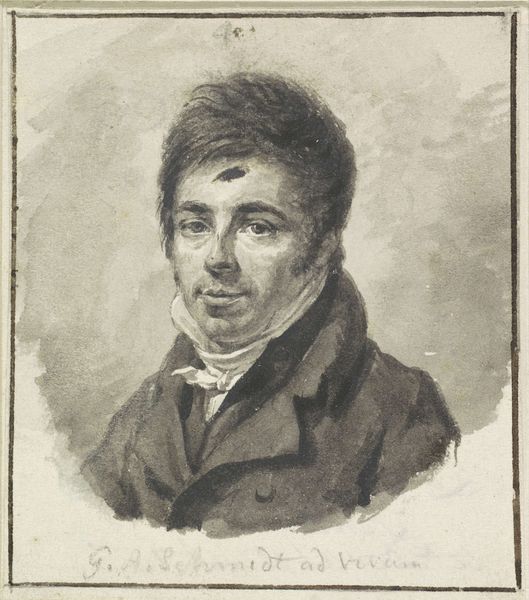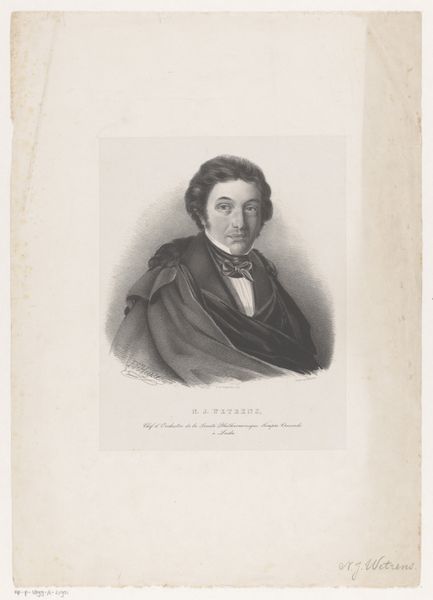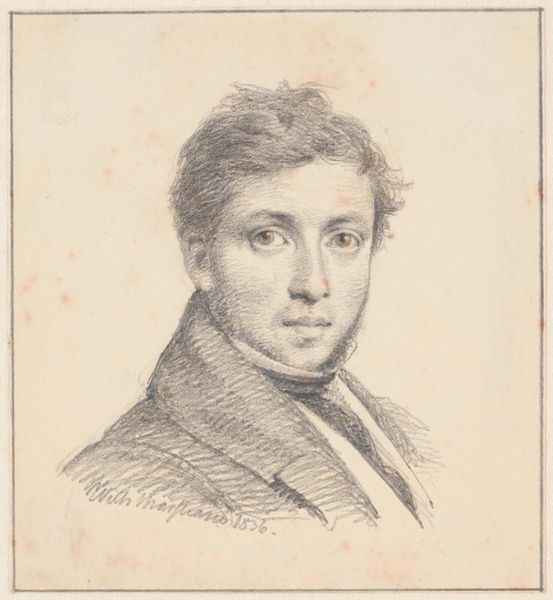
drawing, pencil
#
portrait
#
pencil drawn
#
drawing
#
neoclacissism
#
pencil drawing
#
pencil
#
portrait drawing
Dimensions: height 335 mm, width 251 mm
Copyright: Rijks Museum: Open Domain
Curator: Here at the Rijksmuseum, we're fortunate to house Johannes Reekers' pencil drawing, "Portret van H. Polman," created sometime between 1813 and 1853. The sitter appears quite stern; what's your first impression? Editor: Intensely focused. Almost severe, yet there's a vulnerability in the eyes. The Neoclassical style, with its emphasis on restraint, seems to amplify that internal tension. What do we know about H. Polman? Curator: That's the interesting part, isn't it? Historical records offer scant information. This piece transcends a simple depiction of an individual and enters a social realm, where ideas and the context of representation matter. Reekers, however, was an important figure, serving on the city council of Haarlem, among other roles. Editor: So this piece becomes about power, the male gaze, and how people choose to portray themselves or be portrayed? I see class and privilege etched into every line of that pencil. But it also seems incomplete. Perhaps this very lack of complete information reveals much about the construction of identity at the time. The limited medium itself, pencil on paper, highlights themes of absence and suggested identity. Curator: True, the very act of viewing it in the 21st century alters its narrative and contextual associations as we engage in a dialogue across time and identities. We must then also understand our roles and how society contextualizes the image and those being represented. Editor: Absolutely, acknowledging our own biases is paramount. Perhaps it's not about recovering Polman's 'true' identity, but unpacking the power dynamics inherent in portraiture and the subtle ways they continue to influence our perceptions today. Curator: Well put. The very simplicity of the drawing pushes us to consider all these different layers of socio-political discourse. Editor: It certainly does, a potent reminder that art isn’t created in a vacuum. We must critically reflect upon both our own presence as spectators, as well as what might lie beyond our immediate viewing experience of the pencil strokes themselves.
Comments
No comments
Be the first to comment and join the conversation on the ultimate creative platform.
